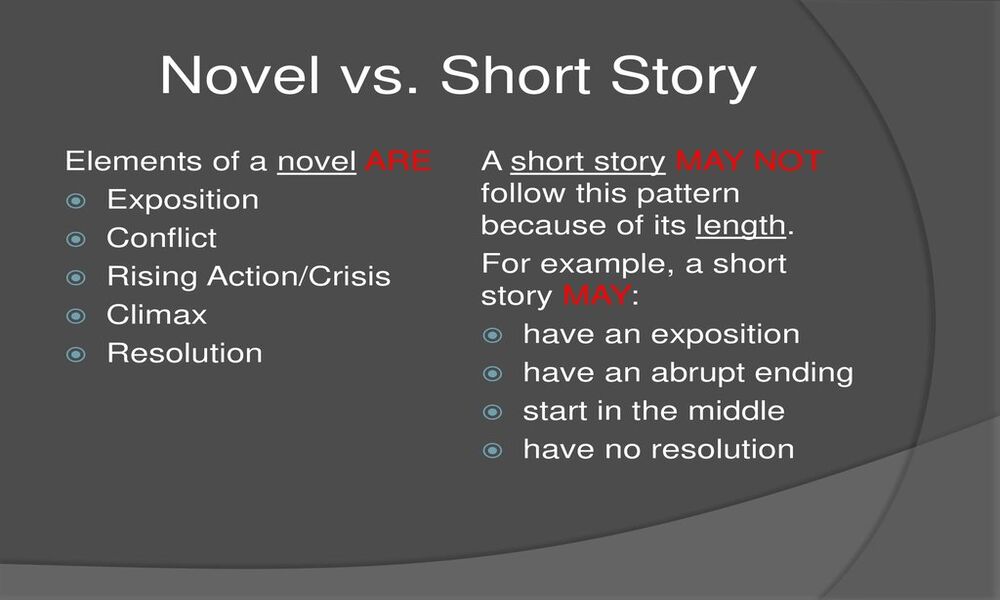Introduction of Online Newspaper and Printed Newspaper
As newspapers evolve in the digital era, their impactful transformation is evident through online platforms. Both printed newspapers and online newspapers serve as distinct formats of providing news and information to readers; understanding their differences is critical for both readers and media organizations alike.
This content outline will examine their differences regarding format, accessibility, this analysis can give us insight into how the digital revolution has transformed traditional newspaper industry practices.
Definition of online newspaper
An online newspaper refers to a digital version of traditional print newspapers accessible via the internet. News organizations typically publish articles, features, and other content for readers to access online through this platform.
Online newspapers are designed to resemble their printed counterparts while taking advantage of digital technology to offer an engaging news experience.
Online newspapers deliver news content directly to a global audience via websites, mobile applications, and other digital platforms in real-time – bypassing the limitations of traditional print distribution models.
Moving online allows greater flexibility for content delivery, multimedia integration, reader engagement, and reader retention – revolutionizing how people consume news in today’s digital landscape.

Definition of the printed newspaper
A printed newspaper is a physical publication that features news, articles, and other written material. Traditionally, this type of newspaper is produced through printing presses and distributed directly to readers in physical form.
Print newspapers are published daily or weekly and available for sale or subscription. They consist of folded or bound sheets of paper organized into sections and pages that contain news stories, editorials, advertisements, and other important pieces of information.
Print newspapers have long been an indispensable source of news and information, enabling readers to access it when they please.
Although digital media have had an effect on newspaper publishers, printed publications still possess their own dedicated readership base while acting as tangible representations of journalistic reporting and analysis.

Importance of newspapers in the digital age
Newspapers remain an invaluable source of news in today’s digital era despite the proliferation of digital platforms like social media.
Here are a few reasons demonstrating their continued importance:
Credible and Trustworthy Information: Newspapers have long been revered as trusted sources for credible, well-researched news coverage.
In an age of misinformation and fake news, newspapers provide reliable news that undergoes stringent editorial processes, fact-checking, and verification processes and adheres to professional journalistic standards that provide their readers with accurate reporting and reporting without bias or political leanings.
Newspapers Provide Comprehensive Coverage and Analysis: Newspapers often offer in-depth coverage and analysis of current events, providing readers with comprehensive news stories, investigative reporting, and features that go beyond headlines or soundbites – providing context, background information, multiple perspectives and a greater understanding on complex issues affecting local, national and international affairs.
Newspapers enable readers to delve deeper into topics that interest them while helping foster greater comprehension for better decision-making in these areas.
Newspapers Offer Diverse Content and Sections: Newspapers offer readers an expansive variety of topics and areas of interest, including news, politics, business, sports, arts & culture, lifestyle & opinion sections – offering something to appeal to readers with diverse reading preferences in one publication. This allows readers to explore various subjects without leaving one publication alone.
Local News and Community Engagement: Local newspapers play a vital role in keeping communities up-to-date on local events, government activities, business developments, and community concerns.
They serve as a forum to showcase achievements, concerns, initiatives and achievements while creating a sense of engagement and participation with their readers.
Furthermore, newspapers act as records of community history while giving local voices a platform to be heard.
Offline Reading Experience: Many readers still appreciate the tactile experience of reading a physical newspaper.
Flipping through pages, underlining articles of interest, and cutting out clippings for later reference can offer an immersive reading experience that some find more immersive and enjoyable than digital alternatives.
Access for Non-Digital Audiences: Not everyone has access to digital devices and the internet; printed newspapers provide news and information to a broader audience, including individuals who may lack internet connectivity or prefer traditional media formats; they reach older adults, rural communities and those who may lack digital literacy.
Gatekeeping and Journalism Ethics: Newspapers have historically played the role of gatekeepers of news, employing professional journalists who uphold ethical guidelines and practice responsible journalism principles.
Their journalists hold themselves to account for accuracy, fairness, impartiality, and independence when reporting the news or providing information.
Their role serves as an essential check and balance against misreporting or spreading false reports of an event or story.
Newspapers remain relevant in the digital era by providing credible information, in-depth coverage, community engagement, offline reading experiences for non-digital audiences, upholding journalism ethics, and offering unique value propositions that complement digital platforms while representing diverse voices and perspectives and encouraging informed civic debate.
Comparison Table of Online Newspaper and Printed Newspaper
Below is a comparison table highlighting the key differences between online newspapers and printed newspapers:
| Aspect | Online Newspaper | Printed Newspaper |
|---|---|---|
| Format | Digital format accessible through websites, apps, etc. | Physical, tangible format |
| Accessibility | Available anytime and anywhere with an internet connection | Limited availability based on distribution and location |
| Devices | Accessible on computers, smartphones, tablets, e-readers | Readable in print form |
| Real-time Updates | Real-time news updates and immediate access to information | News published on a daily or weekly basis |
| Multimedia Content | Supports multimedia elements like videos, images, and audio | Primarily consists of text and images |
| Reader Interaction | Allows for reader comments, social media sharing, and more | Minimal opportunities for reader interaction |
| Cost and Revenue Model | Often free or with nominal subscription fees | Sold at a fixed price, relies on advertising and subscriptions |
| Environmental Impact | Reduces paper consumption and waste | Relies on paper production and generates waste |
| Longevity and Archiving | Easily archived and retrieved in digital databases | Vulnerable to physical damage and deterioration |
Please note that this table provides a general overview of the differences between online newspapers and printed newspapers and may not capture every aspect or variation within each format.
Format and Accessibility
Online Newspaper Wedge
Digital Newspaper offerings are widely accessible via websites, mobile Applications, and other digital platforms, which enable readers to view content across Computers, smartphones, tablets, and other internet-enabled devices.
Accessible Anytime and Anywhere with Internet Connection: One of the great advantages of online newspapers is their accessibility; readers can gain access to news content 24/7 as long as they have an internet connection, providing real-time updates and breaking news coverage – giving immediate access to up-to-date information.
Can be Read on Different Devices: Online newspapers provide readers with the flexibility of viewing content from a range of devices, whether that means a desktop computer, smartphone, or tablet – making news access convenient and portable. This adaptability adds even further convenience and portability of news content access.
Printed Newspaper in Physical Form
Newspapers traditionally find distribution through channels such as newspaper stands, kiosks, vendors, subscription services, and subscription boxes.
Readers can purchase copies at physical locations or have them sent directly to their homes or workplaces for easy availability in specific geographic regions. This distribution model provides wide availability.
Limited Distribution to Geographic Locations: Unlike online newspapers, printed newspapers tend to serve a specific region or community, often targeting particular communities or areas for distribution and advertising purposes.
By doing this, content can be tailored specifically for reader demographics while advertising can reach specific reader bases more easily.
Requiring Physical Handling and Storage: Newspapers require physical handling and storage by their readers. Readers need to physically hold, flip through and store the printed newspaper on shelves or recycling bins – creating an engaging reading experience with tangible materials that brings back nostalgia for some readers.
Online newspapers boast the advantages of accessibility across various digital platforms, anytime access anywhere with an internet connection, and compatibility with various devices.
On the other hand, printed newspapers rely on traditional distribution channels with limited geographic availability and require physical handling and storage – each format providing its own distinctive benefits that cater to specific reader preferences and needs.
Availability on various digital platforms
Online Newspaper accessibility on various digital platforms
Online newspapers are designed to be easily accessible on various digital platforms, providing readers with convenient news content access. Here are some popular platforms where readers can access online newspapers:
Websites: Most news organizations maintain dedicated websites where their articles and news content can be accessed via internet browsers on desktop computers, laptops, and mobile devices. These user-friendly interfaces allow readers to navigate between sections easily while reading articles or accessing multimedia content.
Mobile Applications (Apps): Many online newspapers now offer dedicated mobile applications designed specifically to enhance reading experiences on smaller screens, with optimized layouts and navigation, personalized news recommendations, offline reading capabilities and push notifications of breaking news updates. These applications have proven to be immensely helpful when reading is done via smaller devices.
Reader Devices: E-reader devices such as Amazon Kindle or Barnes & Noble Nook can provide users with access to online newspapers in an immersive reading experience that mimics printed newspaper formats on an electronic screen.
Users can subscribe and download their desired newspapers before reading them on an e-reader device.
Social Media Platforms: Online newspapers often maintain an active presence on popular social media platforms like Facebook, Twitter, and Instagram, sharing news headlines, article snippets, and links back to their websites or apps – providing additional channels for readers to discover and access online newspaper content.
Aggregator Platforms/News Apps: Online newspapers may also be accessible via aggregator platforms or news apps that aggregate news from multiple sources into one convenient place, offering personalized recommendations and configurable preferences to readers.
As digital newspaper platforms enable readers to choose their method of accessing news content – whether through websites, mobile apps, e-reader devices, social media networks or aggregator platforms.
This gives readers greater flexibility when engaging with news content on a device of their choosing. This enables readers to easily engage with news content that suits them and their browsing habits.
Environmental Impact
Online newspaper Production Reduces Paper Consumption and Waste: Online newspapers greatly decrease paper production, as they primarily feature digital versions without physical sheets being printed for distribution.
This decrease in consumption helps protect natural resources such as trees and water while simultaneously decreasing energy and chemical costs associated with paper manufacturing processes.
Digital distribution reduces carbon footprint: Online newspapers utilize digital distribution methods that do not require physical transportation or delivery services, leading to reduced transportation-related emissions and thus contributing to a lower carbon footprint than printed papers which must be transported across various locations for distribution.
Energy Requirements of Digital Infrastructure and Devices: Although online newspapers reduce paper waste and transport emissions, they still need energy for digital infrastructure including servers, data centers, and devices used to access content. Their exact energy use depends on factors like data storage requirements, website maintenance expenses, and user device use.
Newspaper Production is Contributing to Deforestation: Newspaper production requires cutting down trees for paper pulp production, leading to deforestation and loss of biodiversity within forest ecosystems.
Printing requires ink and chemicals: Newspaper production involves the use of inks, solvents, and chemicals in printing and processing operations, which may have environmental ramifications like air and water pollution if these materials are mismanaged and disposed of improperly.
Newspapers create waste when no longer read or becomes outdated, eventually ending up in landfills and contributing to solid waste accumulation. Recycling rates may differ across regions but recycling efforts can help lessen the environmental impact associated with paper waste.
Noting the environmental impact of online and printed newspapers lies not only with their formats themselves but also with energy sources, recycling practices, and waste management practices.
Media organizations and readers can help reduce their environmental impact by switching to digital subscriptions, recycling printed copies responsibly, supporting sustainable paper-sourcing practices, and employing energy-saving practices in digital infrastructure.
Reduces paper consumption and waste
Paperless Publishing: Online newspapers eliminate the need to print on physical paper, drastically cutting consumption while conserving trees that are essential in maintaining ecological balance and biodiversity.
Minimizing Waste Generation: Online newspapers save the environment by operating digitally, eliminating paper waste that would otherwise go to landfills or incinerators. This reduces their volume.
Avoids Ink Usage: Printed newspapers require ink that contains harmful chemicals to print, adding to environmental pollution. By eliminating ink usage online newspapers can reduce environmental impacts associated with their production, usage, and disposal.
Reduce Water Consumption: Paper production requires vast quantities of water; by switching to online newspapers, the consumption of this precious resource is drastically decreased, helping preserve this natural resource and protect our valuable environment.
Reducing carbon emissions: Online newspapers tend to have a smaller environmental footprint compared to printed ones, as their production, transportation, and disposal all add greenhouse gas emissions; on the other hand, online newspaper platforms typically rely on digital infrastructure powered by renewable energy sources for powering their online platform.
Encourages sustainable practices: Online newspapers promote environmental-friendly practices within the publishing industry, contributing to an overall shift toward eco-friendly practices that foster a culture of sustainability.
By opting for online newspapers, readers and media organizations can actively reduce paper usage, reduce waste production, conserve natural resources, and lessen the environmental impact associated with printed newspapers.
Lower carbon footprint due to digital distribution
Digital distribution reduces transportation emissions: Online newspapers use digital channels such as websites and mobile applications to deliver news content directly to readers.
Unlike printed papers that require physical transportation for delivery, this digital route reduces carbon emissions from vehicles used for delivery thereby decreasing the overall carbon emissions footprint.
Reduced Energy Consumption in Distribution: Digital distribution requires significantly less energy consumption compared to printing, packaging, and distributing printed newspapers.
Most of this energy usage comes from data centers, servers, and internet infrastructure that can be optimized for optimal energy use.
Lower Energy Consumption in Reading Devices: Reading online newspapers on electronic devices such as smartphones, tablets, and computers uses significantly less energy than producing and operating printing presses for printed newspapers.
Thanks to recent advancements in technology, electronic devices have become more energy efficient – further decreasing their environmental impact.
Renewable Energy Options for Online Newspapers: Media organizations that publish online newspapers can take advantage of renewable energy sources like solar or wind power to power their digital infrastructure, helping reduce carbon footprint by using clean energy to power servers and data centers.
Reduced Resource Consumption: Digital distribution eliminates the need for physical resources such as paper and ink used in newspaper production and printing processes, thus contributing to conservation efforts while decreasing environmental impacts associated with resource extraction and manufacturing processes.
Scalability and Efficiency: Online newspapers can reach global audiences without needing additional physical resources or infrastructure – this contributes to their lower carbon footprint than printed papers, which require physical production processes for distribution.
By adopting digital distribution methods, online newspapers can reduce their carbon footprint significantly by eliminating transportation emissions, decreasing energy usage, and optimizing resource use. Moving towards digital platforms also aligns with sustainability goals and aids efforts to combat climate change.
Requires energy for digital infrastructure and devices
Energy Consumption in Digital Infrastructure: Online newspapers require energy for their digital infrastructure that runs their operations – including servers, data centers, and network infrastructure – including servers to host data storage services as well as content delivery.
Electricity must supply this power source continuously so as to support ongoing operations as well as maintain content availability and delivery.
Internet Access and User Devices: In order to access online newspapers, readers require internet connectivity which consumes energy-intensive network infrastructure.
In addition, readers use electronic devices such as smartphones, tablets, and computers in order to access and read online newspapers; charging these devices also necessitates energy use and operation costs.
Data Storage and Processing: Online newspapers store and process vast volumes of data, such as articles, images, videos, and user information. Data centers hosting and managing this data consume significant energy for cooling, data processing, and server maintenance costs.
Energy Efficiency Considerations: Although online newspapers require energy for their digital infrastructure and devices, efforts can be taken to increase energy efficiency.
Data centers can utilize energy-saving technologies, cooling mechanisms, and server virtualization in order to decrease their energy consumption; similarly electronic devices can be designed with energy-saving features in mind while readers may adopt power-saving settings or practices.
Media organizations can reduce their environmental impact when powering their digital infrastructure with renewable energy sources such as solar or wind power, helping mitigate its environmental impact by decreasing fossil fuel use and carbon emissions.
Balance Environmental Impact: It is essential to remember that online newspapers consume energy but also help reduce paper usage and transportation-related emissions associated with printed newspapers.
Thus, their overall environmental impact must be carefully considered over their lifecycles – both online and printed versions.
As efforts can be taken to increase energy efficiency, explore renewable energy options and promote sustainable practices when operating online newspapers, the energy consumption associated with digital infrastructure and devices can be reduced, thus mitigating environmental impacts.
Conclusion
Both online newspapers and printed newspapers vary significantly in format, accessibility, and environmental impact. Online publications are accessible via various digital platforms – websites, mobile apps, and e-readers – giving readers access to news content anytime and anywhere with an internet connection.
Online publications reduce paper consumption and waste production while having lower carbon emissions thanks to digital distribution channels and devices; on the other hand, printed publications have limited geographic availability which necessitates physical distribution channels with limited paper usage, ink usage, and waste generation but provide tactile reading experiences.







